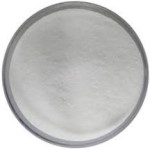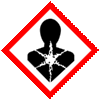Borax or Sodium Borate SDS of Suppliers Exporters, Manufacturers
Borax
CAS Number: 1303-96-4 Sodium Borate USP NF BP Ph Eur Reagent Grade Suppliers Exporters, Manufacturers

Please visit Main Page of Borax or Sodium Borate USP NF BP Ph Eur Reagent Grade Manufacturers.
Borax or Sodium Borate Decahydrate SDS, Safety Data Sheet
MSDS Sheet 08-May-22
1. Product Identification
Product Name & Other Names: Sodium borate decahydrate or borax or sodium pyroborate.
CAS No.: 1330-43-4 (Anhydrous) 1303-96-4 (Decahydrate)
EINECS EC Number: 215-540-4
Relevant uses and uses advised against (if any): Laboratory Chemicals and Industrial Manufacturing Use.
Supplier: As per letterhead.
2. Hazards Identification
GHS, Globally Harmonized System Classification in accordance with 29 CFR 1910
Classification according to Regulation (EC) No 1272/2008
Serious eye damage/eye irritation Category 2A, H319
Reproductive toxicity Category 1A, 1B, H360
Labeling according to GHS & Regulation (EC) No 1272/2008
GHS Label Elements  Health Hazard |
Signal Words: Danger
Hazard Statements:
H319: Causes serious eye irritation.
H360: May damage fertility or the unborn child.
Precautionary Statements:
P201: Obtain special instructions before use.
P202: Do not handle until all safety precautions have been read and understood.
P264: Wash contaminated parts thoroughly after handling.
P280: Wear protective gloves/protective clothing/eye protection/face protection.
P281: Use personal protective equipment as required.
P305+351+338: IF IN EYES: Rinse cautiously with water for several minutes. P337+P313: If eye irritation persists get medical advice/attention.
P308+313: IF exposed or concerned: Get medical advice/attention.
P337+313: If eye irritation persists get medical advice/attention.
3. Composition/Information on Ingredients
Product Name & Other Names: Sodium borate decahydrate or borax or sodium pyroborate.
CAS No.: 1330-43-4 (Anhydrous) 1303-96-4 (Decahydrate)
EINECS EC Number: 215-540-4
4. First Aid Measures
Always seek medical attention after first aid measures are provided.
Inhalation: If Sodium Borate or Borax is inhaled, remove to fresh air. If not breathing, give artificial respiration. If breathing is difficult, give oxygen. Get medical attention.
Ingestion: Induce vomiting immediately as directed by medical personnel. Never give anything by mouth to an unconscious person. Get medical attention.
Skin Contact: Immediately flush skin with plenty of water for at least 15 minutes while removing contaminated clothing and shoes. Get medical attention. Wash clothing before reuse. Thoroughly clean shoes before reuse.
Eye Contact: Check for and remove any contact lenses. In case of contact, immediately flush eyes with plenty of water for at least 15 minutes. Cold water may be used. Get medical attention if irritation occurs.
5. Fire Fighting Measures
Fire: Not considered to be a fire hazard.
Fire Extinguishing Media: Use water spray, alcohol-resistant foam, dry chemical, or carbon dioxide. Use any means suitable for extinguishing surrounding fire.
Extinguishing Media Not recommended: Avoid using solid water jet as it may scatter the fire.
Special Information: In the event of a fire, wear full protective clothing and NIOSH-approved self-contained breathing apparatus with full face piece operated in the pressure demand or other positive pressure mode. At elevated temperatures under fire conditions, it may produce toxic or irritating fumes. Fire-extinguishing work is done from the windward and the suitable fire-extinguishing method according to the surrounding situation is used.
6. Accidental Release Measures
Personal precautions, protective equipment, and emergency procedures: Ventilate area of leak or spill. Avoid breathing dust/fumes/gas/mist/vapors/spray. Use individual protective equipment (waterproof boots, suitable protective clothing, safety glasses, etc.). Do not approach facing the wind.
Environmental precautions: Do not let the product enter drains, soil, or water sources.
Methods and materials used for containment cleanup procedures and Storage: Contain spilled material. Cover with an inert, non-combustible absorbent material, (e.g., sand, earth, diatomaceous earth, vermiculite). Vacuum or sweep-up and remove to an approved disposal container. Finish cleaning by spreading water on the contaminated surface and allow to drain as per law.
7. Handling and Storage
Precautions for safe handling: Apply according to good manufacturing and industrial hygiene practices. Ensure proper ventilation. In case of insufficient ventilation, wear suitable respiratory equipment. Wash thoroughly after handling. Do not drink, eat, or smoke while handling. Avoid contact with skin, eyes, and clothing. Minimize dust generation. Avoid breathing dust/fumes/gas/mist/vapors/spray. Use individual protective equipment (waterproof boots, suitable protective clothing, safety glasses, etc.).
Conditions for safe storage, including any incompatibilities: Store in cool, dry, and ventilated area away from heat sources and protected from sunlight in tightly closed original container. Keep air contact to a minimum. Store protected from heat, sparks and ignition sources and incompatible materials. Do not store with incompatible materials like acids, alkaloids, and metallic salts.
8. Exposure Controls/Personal Protection
Airborne Exposure Limits:
Sodium Tetraborate Decahydrate (1303-96-4)
USA ACGIH, ACGIH TWA (mg/m³), 2 mg/m³
USA ACGIH, ACGIH STEL (mg/m³), 6 mg/m³
Sodium borate USA (OSHA) TWA 10 mg/m3
Ventilation System: A system of local and/or general exhaust is recommended to keep employee exposures below the Airborne Exposure Limits.
Personal Respirators (NIOSH Approved): If the exposure limit is exceeded and engineering controls are not feasible, a full-face piece particulate respirator (NIOSH type N100 filters) may be worn for up to 50 times the exposure limit or the maximum use concentration specified by the appropriate regulatory agency or respirator supplier, whichever is lowest.
Skin Protection: Wear impervious protective clothing, including boots, gloves, lab coat, apron, or coveralls, as appropriate, to prevent skin contact.
Eye Protection: Use chemical safety goggles and/or full-face shield where dusting or splashing of solutions is possible. Maintain eye wash fountain and quick-drench facilities in work area.
Other Control Measures: Maintain good housekeeping in work area. Handle in accordance with good industrial hygiene and safety practice.
9. Physical and Chemical Properties
Appearance: White, gray, bluish or greenish white streaked crystals.
Odor: Borax is odorless.
Odor threshold: Not applicable.
pH: Alkaline
Relative density: No data found.
Boiling Point: 320C (608F) Loses water
Melting Point: 75C (167F)
Flash point: No data found.
Auto-ignition temperature: No data found.
Decomposition temperature: No data found.
Upper/lower flammability or explosive limits: No data found.
Vapor pressure: No data found.
Vapor density: No data found.
Evaporation rate: No data found.
Flammability (solid, gas): No data found.
Partition coefficient: n-octanol/water: No data found.
Solubility: 6g/100g water.
Viscosity: No data found.
Molecular Weight: 201.22 or 381.37
Chemical Formula: Na2B4O7 or Na2B4O7.10H2O
10. Stability and Reactivity
Stability: Stable under ordinary conditions of use and storage.
Hazardous Decomposition Products: Toxic gases and vapors may be released if involved in a fire.
Hazardous Polymerization: Will not occur.
Incompatibilities: Acids, alkaloids, and metallic salts.
Conditions to Avoid: Incompatibles.
11. Toxicological Information
Hydrate: Oral rat LD50: 2660 mg/kg.
Investigated as a mutagen, reproductive effector.
Investigated as a reproductive effector.
Carcinogenic Effects: Not a reported carcinogen by IARC NTP ACGIH OSHA.
12. Ecological Information
Toxicity to fish: LC50 - Limanda: 74 mg/l - 96 h, EC50 Daphnia: 1085 mg/l
Environmental Fate: When released into the soil, this material may leach into groundwater.
This substance/mixture contains no components considered to be either persistent, bioaccumulative and toxic (PBT), or very persistent and very bioaccumulative (vPvB) at levels of 0.1% or higher.
13. Disposal Considerations
Whatever cannot be saved for recovery or recycling should be managed in an appropriate and approved waste disposal facility.
14. Transport Information
DOT USA, TDG Canada & ADR/RID Europe: Not regulated.
IMDG/IMO: Not regulated.
IATA/ICAO: Not regulated.
15. Regulatory Information
USA:
SARA 311/312: See section 2.
California Prop. 65 Components: This product does not contain any chemicals known to State of California to cause cancer, birth defects, or any other reproductive harm.
16. Other Information
Disclaimer:****************************
Our company provides this Borax or Sodium Borate SDS information contained herein in good faith but makes no representation as to its comprehensiveness or accuracy. This MSDS sheet is intended only as a guide to the appropriate precautionary handling of the material by a professionally trained person using this product. Individuals receiving the information must exercise their independent judgment in determining its appropriateness for a particular purpose.
****************************
Please visit Technical Data Sheet of Borax or Sodium Borate USP NF BP Ph Eur Reagent Grade Suppliers.
Boric Acid CAS Number 10043-35-3 & Borax or Sodium Borate CAS Number 1303-96-4 Supplier Exporter, Manufacturer:
Annie Chemie P Ltd
Mumbai 4000010, INDIA
With Agents and offices in UAE, USA, Europe.
e-mail: info@anniechemie.com
Copyright and Usual Disclaimer is Applicable.
May 29, 2025
Exporters to USA, Canada, UK, Europe, UAE, Nigeria, Algeria, Turkey, Mexico, Brazil, Chile, Argentina, Australia, Dubai etc.
Perfection is made up of small things and that is a big thing.
